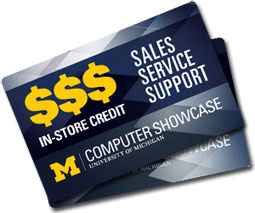Recycling e-Waste
Electronic waste—or e-waste—is what your once shiny, cool gadget becomes when it turns old and uncool. Obvious items include computers, televisions, cell phones, tablets and game consoles. Less obvious ones include keyboards, mice, memory chips and cables.
Why Should We Recycle e-Waste?
Protect the Environment
- Electronic waste, or e-Waste, is the fastest growing waste stream in the country.
- e-Waste is consuming too much landfill space.
- Electronics should be properly recycled.
- Untreated e-Waste may contain hazardous materials, which can adversely affect the environment.
Conserve Natural Resources
- Consumer electronics contain materials that require the mining of raw materials. They are highly recyclable.
- Electronics recycling technology separates commodity streams of metals, plastics and glass, and processes these materials for reuse in new products.
Recycling Responsibly Is the Right Thing to Do
- The Environmental Protection Agency (EPA) estimates that as much as 80% of improperly discarded consumer electronics in the U.S. ends up in developing countries where environmental and workers' health and safety laws are non-existent. This practice also fuels a multibillion-dollar industry of identity theft in these countries.
- When recycling e-waste, be sure to confirm that ALL equipment collected will be destroyed and recycled in the U.S. in accordance with all local, state and federal guidelines, regulations and laws pertaining to the collection, transportation and recycling of electronics equipment.
U-M Best Practice
- All UM-owned equipment must be disposed of through Property Disposition. If Property Disposition cannot resell an item, Property Disposition will recycle it through U-M Occupational Safety & Environmental Health in accordance with state and federal regulations.
Visit the EPA website for more tips on recycling your e-Waste.
Upgrading or getting a new device? Consider these options to reduce your impact on the environment.
Reduce
First, consider if you really need the newest version. Find out if you can upgrade your current device by adding more memory, reformatting it or simply eliminating unused applications to make it snappy again. When it is time to buy a new product, remember to buy smart. Consider if a product is EPEAT registered and Energy Star certified before purchase.
Reuse
It is possible that someone else will want the electronics that you are replacing.
- Try to locate a new home for your castoffs using Craigslist or Ann Arbor eCycle.
- Donate your outdated electronics. Goodwill's Reconnect program and Computers with Causes are some of the many programs that take donated computers and makes them accessible to families in need.
There may also be alternative uses for your old electronics.
- Try researching Do It Yourself projects to make use out of your old devices.
Recycle
Finally, don't throw the electronics into the trash. For personal devices, use the following resources to recycle the electronics that you no longer need.
- Be sure to recycle all peripheral devices, cables and media.
- Earth 911 allows you to search products to find the nearest recycling or disposal center.
- The EPA eCycling site provides a lot of information on electronics recycling (eCycling).
- Do some research, check to see if your device’s manufacturer offers a take-back program for old electronics.
- You can also stop by Recycle Ann Arbor's Drop-off Station to recycle your used electronics for a fee.
- Clear all data off of your hard drive before recycling. Follow the procedures on the Safe Computing's guide and the Sanitation Procedure Guide to remove data from your hard drive. You may also find these non-University sites, complete with video and images, helpful:
- Recycle Ann Arbor also offers a hard drive shredding service for $10.00 complete with a certificate of destruction.
- Computer Showcase has partnered with Encore Repair for a new way to recycle your used devices (computers, tablets, cell phones or MP3 players). When you trade in a device, you get instant in-store credit toward the purchase of new technology from Computer Showcase.
- For details and to find out how to participate in this program, visit the Computer Showcase website or send your questions to [email protected].
This program is intended for personally-owned devices. For information on disposal of university-owned technology, please visit Property Disposition for UM departments.

U-M Best Practice
- If your university-owned equipment can no longer be used, send it to U-M Property Disposition to be disposed of properly. (Make sure to check with your IT or facilities department first.)
Don't forget to close the recycling loop by using recycled material.
- Buy recycled paper and toner cartridges.
- Find manufacturers that use recycled materials by checking the EPEAT ratings.
Responsibly Recycle Obsolete Equipment
To learn about regulated recycling—including light bulbs, batteries, mercury, etc.—download Pollution Prevention: Regulated Recycling Programs.
U-M Best Practice
- To schedule the pickup of e-waste of UM-owned property accumulated up to one year, contact Occupational Safety and Environmental Health.
